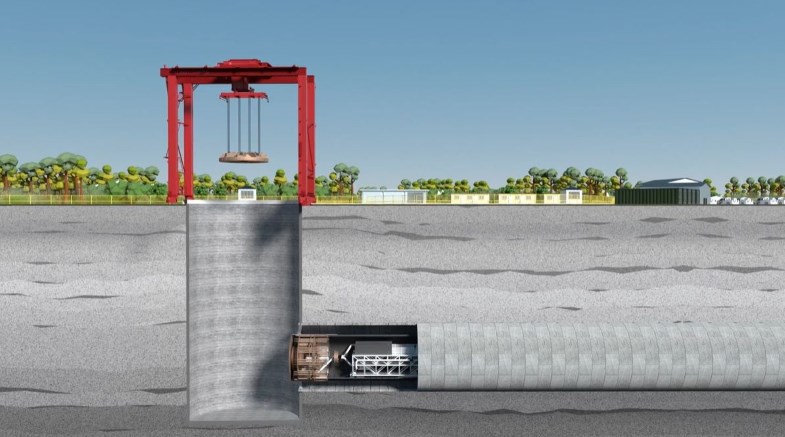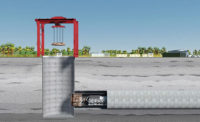Enbridge Energy will issue requests for proposals in the coming weeks for contractors to construct a $500-million Great Lakes Tunnel to carry crude oil and natural gas liquids through the Straits of Mackinac between Michigan's upper and lower peninsulas.
Ryan Duffy, a spokesman for the Calgary, Alberta-based multinational energy company, said the RFP process will take about six months.
The Mackinac Straits Corridor Authority on Feb. 16 concurred with a staff recommendation that Enbridge meets all requirements specified in a 2018 agreement between the firm and the State of Michigan.
“Enbridge has assembled a world-class team for the project, Duffy said, and with the [authority] concurrence, added that the firm "is prepared to issue the RFP to select a construction contractor to build this critical utility infrastructure modernization project."
The Tunnel Agreement between the state and Enbridge calls for the company to start construction within 180 days of receiving a construction permit from the U.S. Army Corps of Engineers. The Corps is still performing an environmental review.
The RFP specifies that potential contractors should look at beginning construction of the approximately four-mile tunnel no earlier than first quarter of 2024. It is estimated that work will take at least four years.
Arup is the design engineer.
Line 5 ships 540,000 barrels per day of crude oil and refined products from Superior, Wis., to Sarnia, Ontario, via the Straits.
The agreement, reached in late 2018 under previous Michigan Gov. Rick Snyder (R), requires the company to build the tunnel beneath the Straits to contain a new segment of Line 5, which has been the target of environmentalists as a pipeline that endangers the Great Lakes.
The current 68-year-old twin pipelines stretch along the lake bottom with no protection other than their own protective coatings. Even Enbridge concedes that the pipelines, as they are, need to be replaced. The deal for the replacement tunnel was passed by the Michigan legislature and signed by Snyder in the last days of his administration.
Current Gov. Gretchen Whitmer (D) cited safety and environmental concerns as reasons behind her attempt in November 2020 to revoke a permit that allows Enbridge to operate the pipeline.
Michigan and Enbridge have been at loggerheads over the pipeline practically since her administration began in 2019.
Michigan Attorney General Dana Nessel and Whitmer both filed lawsuits seeking to shut down Line 5 in 2020. Enbridge countered with its own lawsuit to keep it open. Whitmer eventually dismissed her federal lawsuit, but a hearing on Nessel's federal case against the company still awaits a hearing. Whitmer now says the matter should be resolved in state court.
Lynsey Mukomel, press secretary for Nessel, declined to comment on the lawsuit or on Enbridge moving forward with the RFP process. A spokesperson for the governor’s office did not respond to requests for comment.
Duffy said the company is eager to advance the tunnel project in which it has invested more than $100 million to date.
“Enbridge remains intensely focused on obtaining the required permits to construct the project,” he said. “While we do so, Enbridge is committed to the sustained and safe operation of Line 5 and has demonstrated that commitment with our enhanced safety measures in the Straits, which include 24/7 monitoring of ship traffic.”
Enbridge received the easement to build Line 5 under the Straits in 1953.
Duffy said the Great Lakes Tunnel will be a step forward in safety. “Placing the pipeline in a new Great Lakes Tunnel will provide extra layers of safety and environmental protection ... while creating Michigan jobs and securing the energy consumers in Michigan and the region rely on every single day to live their lives and fuel the economy,” he said.
Line 5's protective coating was damaged in 2018 when a ship dropped a 12,000-lb anchor into the Straits and hit the structure.
This story was updated March 6 to state the Line 5 Tunnel would run across the Straits of Mackinac from Michigan's upper to lower peninsulas. An earlier version said one side would extend to Ontario, Canada.





Post a comment to this article
Report Abusive Comment